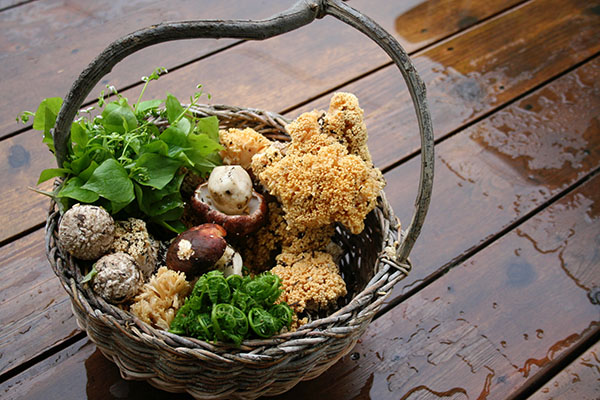I normally feature lesser-known species here in Leaf Root Fungi Fruit. However, there is a mushroom whose awesomeness is so unquestionable, that in spite of being well-known, it’s a poignant example of underappreciated forest treasure. Assuming the rains have continued sporadically this season, the venerable spring kings are arising. Kings refer to king boletes, the sought after porcini of Italy and many other countries in the northern hemisphere. “Spring” is our version, Boletus rex -verus, the brick red variety which comes up earlier in the year.
If you were in a fairy tale in the most picturesque woods with mirror pools, fairies, gnomes, and talking animals, and came across a clump of alluring rotund cartoon looking mushrooms, they would be kings. Encountering them is intoxicating, resulting in an annual yearning that may haunt you forever.

Spring kings also have the benefit of coming up in a particularly beautiful time of year and inhabit pristine mid to older-growth mixed stands of montane white fir, pine, and hemlock. If the trees are well-spaced yet still shading out the sun, with huckleberries and bear grass filling the understory, you are in the right place. They frequent our local mountains, and I’ve seen them in the woods around Deer Park, in the Idaho Panhandle from Priest River to the Canadian border, and along the I-5 Corridor from Coeur d’Alene to St. Regis. They are beacons of a healthy ecosystem. This adds to their majesty but also makes them a valuable advocate of forest preservation. Hopefully the more people who want them, the more our forests will be valued beyond just timber.
Boletus rex-verus is eminently identifiable and therefore perfect for beginners. They are one of the few boletes (mushrooms with a spongy spore bearing surface opposed to gills) that have a brick reddish brown cap. Other features are the round robust density, white pores when young, and an overlay of an interwoven raised pattern on the top of the club-shaped stem, called reticulations. They are adored by many mammals and insects, so it’s not uncommon to find them with teeth marks. To avoid unsavory members of this family, cut or break a piece off and make sure it doesn’t stain blue. That will narrow your possibilities down to only edible species.
Hunting mushrooms can be a discouraging hobby highlighted with occasional eureka moments. Spring kings epitomize this. To avoid the resulting frustration and suffering, I suggest hiking casually in season through their habitat but not actually hunting for them. That way, one day they will miraculously appear before you—a celebration of earth and art and magic and feasting—and you will be ready.
Identifying Attributes: Prominently round and fecund. Brick red, lumpy cap over fine pores. They usually grow scattered or in little clumps in ideal montane forests.
Look-alikes: There are countless other boletes, but nothing similar that is dangerous if you are careful with your identification. To be safe, eliminate all blue staining specimens of this family, and you will only run the risk of a less delicious feast.
Culinary Attributes: The firmness is fleeting so pick when young or use mature specimens dried and ground as a flavoring in soups and sauces. Fresh porcini are perfect grilled or with polenta.
Wine Pairings: One of the few wild foods complimented by chardonnay. //
[Feature photo “a statuesque Boletus rex-verus showing lighter colors of a dryer spring” by Kelly Chadwick.]












